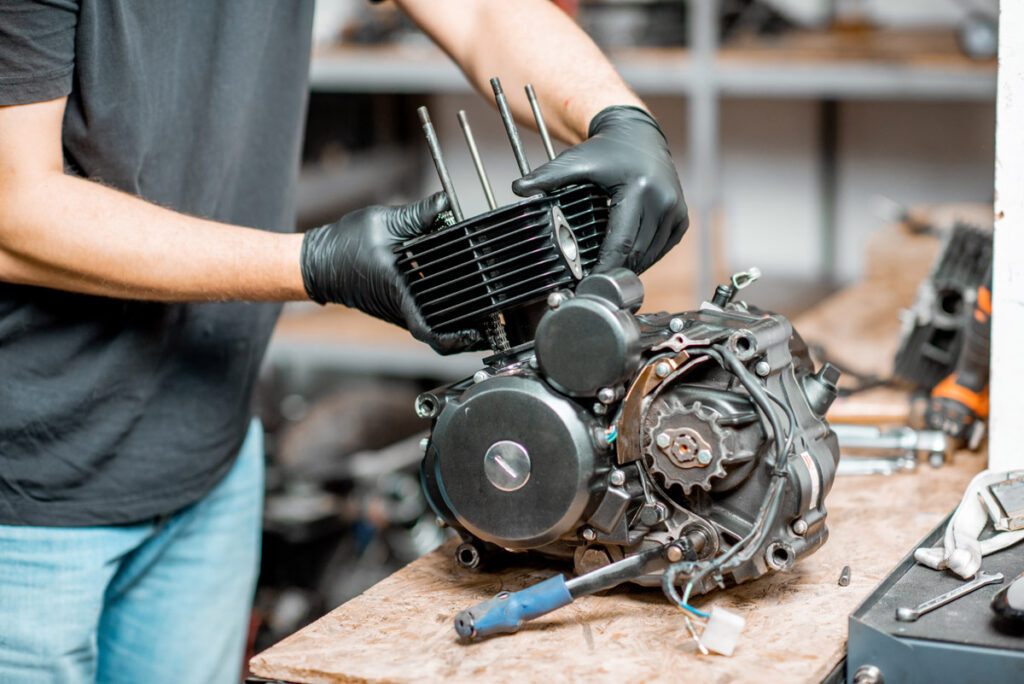Spring hits fast. Mowers, trimmers, blowers, and generators all show up at once, and every customer wants a quick turnaround before the first sunny weekend. The shops that keep calm do a few simple things very well. They book early checks, sort work by speed, keep parts moving, and talk to customers before questions pile up. With clear roles and short routines, the day feels busy but not wild. Add software for small engine repair shop workflows to keep jobs, parts, and approvals in one place, and your team spends more time fixing and less time searching.
What the Rush Really Looks Like
Spring brings ringing phones and a lot of machines that sit all winter. Weather swings change demand day by day, so the plan needs to flex without drama. Here is a simple way to stay in control when volume spikes.
1. Open Preseason Booking and Deposits
Offer March tune-up slots before the rush. Take a small deposit and list exactly what the service engine repair includes. You’ll smooth demand, lock in work, and reserve common parts early. Customers like knowing their mower will be ready when the grass starts growing. You start April with jobs on the calendar and fewer walk-in surprises. Early checks also expose hard problems, giving you time to order odd parts before shelves empty and competitors scramble for the same items.
2. Triage Every Machine in Five Minutes
Give every machine a five-minute drop-off check: fuel, spark, air, blade or line, cables, leaks. Tag green for quick, yellow for standard, red for complex, or parts in order. Share the color and a price range immediately so expectations are clear. The bench then tackles fast wins first, while long jobs move to staging. This habit stops stalled work from blocking the lane and turns a chaotic morning into a plan everyone understands completely.
3. Use Simple Service Menus
Build simple service menus for common needs: tune-up, pull-start repair, carb clean, belt or blade replacement. Show what’s included and a fair price range that fits most models. List add-ons separately so customers can choose, not guess. Menus speed approvals, reduce counter talk, and prevent awkward totals at pickup. New staff lean on the menu instead of improvising. During rush weeks, engine repair clear choices keep lines moving and protect margin without constant manager intervention across stores.
4. Keep Parts Flowing Before the Wall of Work
Review last spring’s fast movers and place small weekly orders now. Keep approved alternates for plugs, filters, belts, and blades. Receive at one station and label bins to ticket IDs so parts meet machines on time. A quick shelf check each morning catches low stock early. Use software for small engine repair shop workflows to reserve items on the ticket as soon as they’re needed. Steady rhythm beats panic buys, cuts rush shipping, and keeps techs turning wrenches.
5. One Bin, One Owner, Next Step Visible
Assign every ticket a bin and a named owner. Write the next step on the tag in plain words: call for approval, wait for parts, test, and stage. Walk the floor before lunch and at closing to find anything stuck. Swap owners or unblock the step on the spot. Clear ownership makes answers quick when customers call, prevents lost hardware, and keeps the bench moving when volume spikes after the first sunny weekend in spring.
6. Approvals and Updates Without Phone Tag
Send a short text with the estimate, plus a photo when useful. Offer one-tap approval and set a pickup window as soon as parts land. Communicate slips immediately: PwC found 32% of customers will stop buying from a brand they love after a single bad experience, so silence is costly. Proactive updates cut “is it ready” calls, calm the lobby, and help techs stay focused. Fewer phone tags mean more finished jobs each afternoon, consistently.
7. Quality Checks Before the Machine Leaves
Run two quick quality checks. First, right after the fix: start, idle, throttle, safety features, and a brief run or cut test. Second, before pickup: confirm accessories, fuel level, and clean hand-off notes. Use a tiny checklist so new staff follow the same steps. Catching issues early avoids returns and stressful parking-lot debates. The final check also stages the machine for a fast handoff, turning pickups into short, positive moments during the rush season.
Conclusion
Spring rush does not have to feel chaotic. Book early tune-ups, triage fast, use clear service menus, and keep parts moving in small, steady orders. Give each ticket a bin and owner, send short updates before customers ask, and run two quick quality checks so returns are rare. When volume spikes, staff to the weather and keep a simple plan you can adjust at midday. Back these habits with software for small engine repair shop, so tickets, parts, notes, and payments stay in one place and the team can focus on the fix.



